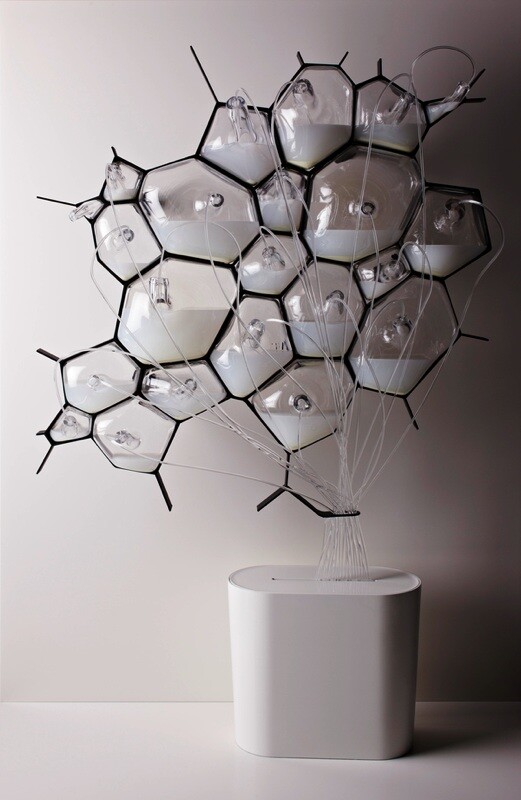The search for greener, more power-efficient lighting systems won't stop with compact fluorescents and LED systems if Dutch electronics giant Philips has anything to say about it. In an effort to embrace a truly natural approach to lighting, the company took a cue from fireflies and deep-sea creatures to create a (literally) green light powered not by electricity or sunlight, but by glowing bioluminescent bacteria.
As one of numerous systems in its Microbial Home (MH) concept, Philips tasked itself with creating a lighting system driven by the wastes typically generated in the average home. To feed the bacteria housed in the bio-light's unusual hand-blown glass compartments, methane - which could generated by the MH kitchen's bio-digester unit from composted bathroom solids and kitchen vegetable waste - is piped in through thin silicon tubes connected to a reservoir at the base.

Light produced by bacteria, or luminescence, is heat-free in contrast to incandescence, which is light generated by objects heated to glowing. A similar form of light, chemoluminescence, is given off by the familiar snap and shake glow sticks (a mixture of phenyl oxalate, fluorescent dye and hydrogen peroxide) but those are closed one-use systems with a limited light-production period.
The bio-light's living bacteria, on the other hand (which utilize the enzyme luciferase, and its substrate, luciferin, to generate light) can be driven indefinitely, as long as key nutrients are supplied. While the light given off isn't bright enough to fully replace artificial light just yet, it's definitely a step in the right direction, especially because it gets people thinking about untapped household energy sources ripe for the plucking.
Along with providing interesting, grid-free ambient light around the home, Philips envisions numerous other uses for its bacterially-driven lights, including warning strips on curbs and steps, exit signs in low-light entertainment venues and perhaps even nighttime edge indicators for roads and highways. It turns out seeing green while being green may be closer than we thought!









